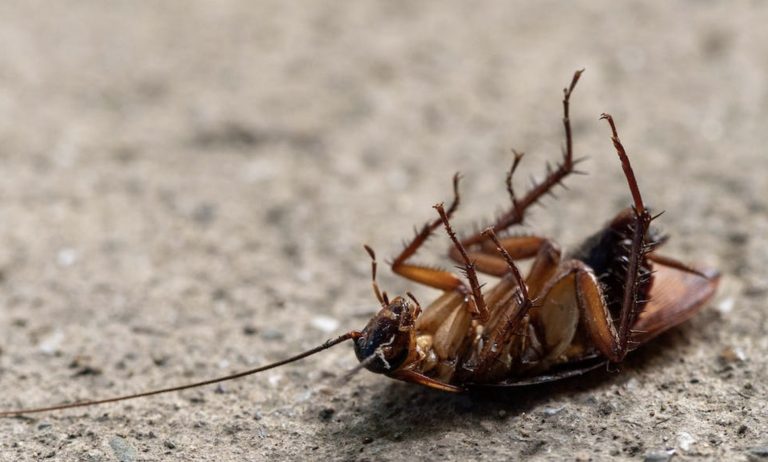Cockroaches are one of the most resilient and adaptable pests on the planet. These hardy insects have been around for over 300 million years, outliving even the dinosaurs. With an estimated 4,600 species worldwide, their ability to thrive in diverse environments is truly remarkable.
In this article, we’ll delve into the creepy truth about cockroach behaviors that make them such formidable foes. From their biological advantages to their nightmarish habits, we’ll uncover what drives these pests and how to effectively stop their invasion into our homes.
KEY TAKEAWAYS
- Cockroaches are incredibly resilient pests, having survived for over 300 million years due to their biological advantages and adaptability.
- Their nightmarish habits, such as being nocturnal, having an omnivorous diet, and the ability to go months without food, make them difficult to eliminate.
- Cockroach infestations pose serious health risks, including triggering allergies, spreading diseases, contaminating food, and causing property damage.
- Preventing cockroach invasions requires a multi-pronged approach, including sealing entry points, eliminating food and moisture sources, reducing clutter, and maintaining cleanliness.
Story Stages
The Creepy Reality of Cockroach Biology
Let’s start by understanding what makes cockroaches such evolutionary champions. Their flat, streamlined bodies allow them to squeeze through the tiniest of cracks and crevices, making it nearly impossible to keep them out. With their long, whip-like antennae and spiny legs, they can navigate and cling to almost any surface with ease.
But what’s truly mind-boggling is their reproductive capabilities. A single female American cockroach can produce up to 800 offspring per year, and these little critters reach maturity in just a few months. That’s why a small infestation can quickly spiral out of control if left unchecked.
Nightmarish Habits and Behaviors
If you thought cockroaches were just a nuisance, think again. These pests exhibit some truly nightmarish habits and behaviors that will make your skin crawl. For starters, they’re nocturnal creatures, preferring to lurk in the dark, damp corners of our homes when we’re asleep.
And their eating habits? Well, let’s just say they’re not exactly picky eaters. Cockroaches will feast on just about anything, from crumbs and spilled liquids to decaying matter and even feces. Gross, right? But wait, it gets worse—they can go for months without food and hold their breath for an incredible 40 minutes, making them nearly impossible to starve out.
Where Cockroaches Lurk and How They Spread
Now that you know what drives these creepy crawlies, let’s talk about where they like to hang out and how they manage to infiltrate our homes. Cockroaches can enter through the tiniest of cracks and crevices, as well as drains, and vents, and even hitch a ride on grocery bags or boxes.
Once inside, they’ll make themselves at home in the warmest, most humid areas of your house, like the kitchen, bathroom, and basement. From there, they can easily spread to other rooms, contaminating surfaces, and food sources as they go.
But it’s not just your home that’s at risk. Cockroaches can also travel from one infested location to another, hitching rides on clothing, luggage, or even vehicles. That’s why it’s so important to be vigilant, especially when visiting places like restaurants, hotels, or apartment buildings.
Health Hazards and Risks of Cockroach Infestations
Beyond the ick factor, their infestations pose serious health risks that can’t be ignored. Their body parts, saliva, and fecal matter can trigger asthma attacks and allergic reactions, especially in children and those with compromised immune systems.
But that’s not all—cockroaches are known to carry and spread a variety of bacteria, viruses, and parasites that can cause foodborne illnesses, like salmonella and E. coli. And if that’s not enough to make you shudder, these pests can also contaminate and spoil food, leaving behind unpleasant odors and stains.
Even your property itself isn’t safe. Cockroaches have been known to cause damage by feeding on materials like book bindings, wallpaper, and even furniture. Their nesting habits can also lead to structural damage over time, making infestations a costly problem to solve.
A Multi-Pronged Approach to Cockroach Prevention
Now that you know the creepy truth about their behaviors and the dangers they pose, it’s time to take action. The key to keeping these pests at bay is a multi-pronged approach to preventive pest control that denies them access to food and water sources.
Start by sealing up any cracks, crevices, or entry points they could use to get inside. Then, focus on eliminating potential food sources by keeping surfaces clean, storing food in airtight containers, and taking out the trash regularly. Don’t forget about reducing moisture and standing water, as cockroaches thrive in humid environments.
Finally, declutter your living spaces and eliminate any potential hiding spots. Cockroaches love to nest in clutter, so keeping your home tidy and organized can go a long way in making it less inviting for them. By following these preventive measures, you’ll be well on your way to a cockroach-free home.
Closing Thoughts
Cockroaches are undoubtedly one of the most persistent and resilient pests on the planet. Their creepy behaviors and biology have allowed them to thrive for millions of years, making them a formidable foe for homeowners. However, by understanding what drives these pests and implementing an integrated prevention approach, you can take back control and keep your home cockroach-free. Stay vigilant, and don’t let these critters get the upper hand.
